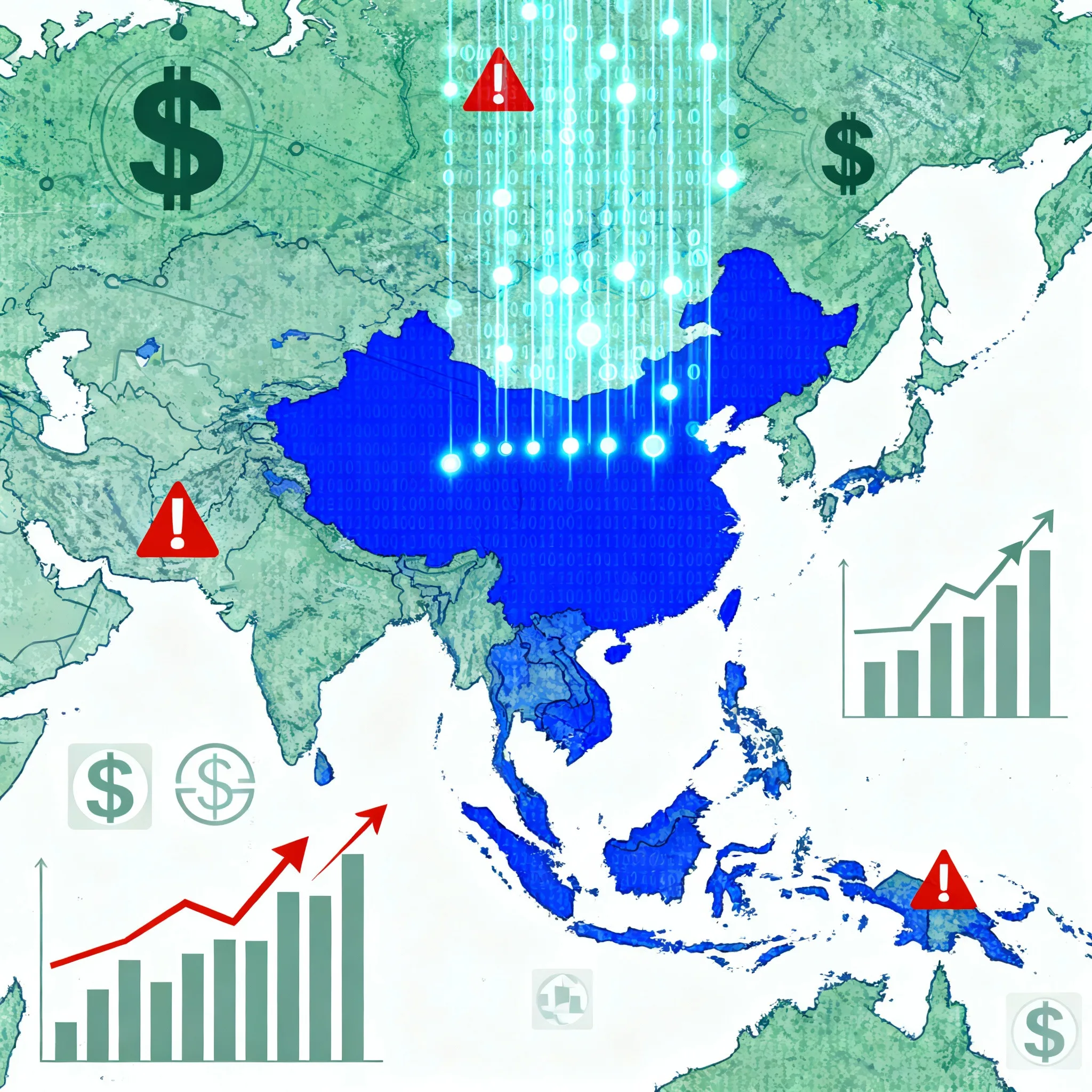Key Insights
- Asia’s financial systems remain significantly vulnerable to quantum computing threats, with most companies unprepared for quantum-related cybersecurity risks
- Over 90% of Asia Pacific enterprises plan to prioritize post-quantum security technologies by 2026, driven by escalating cyber threats and government initiatives
- Experts warn of “harvest now, decrypt later” attacks and call for urgent investment in quantum-safe encryption and cryptographic inventory management
Asia’s financial sector is facing an emerging and urgent threat from quantum computing advancements, with cybersecurity experts warning that most companies across the region remain dangerously unprepared for the quantum era. The growing vulnerability stems from the uneven readiness across Asian markets, where financial institutions have not adequately assessed or implemented quantum-resistant security measures to protect their critical infrastructure and sensitive data.
The quantum computing threat to Asia’s financial systems represents one of the most pressing cybersecurity challenges of the coming years. Unlike traditional cyber threats that organizations have learned to manage, quantum computers possess the potential to break current encryption standards that protect financial transactions, customer data, and critical banking infrastructure. This capability creates what security experts call the “harvest now, decrypt later” threat—where attackers collect encrypted data today and decrypt it once quantum computers become powerful enough to break current cryptographic protections.
The Scale of Asia’s Quantum Vulnerability
The uneven readiness across Asia’s financial institutions reveals a troubling gap in quantum security preparedness. While some organizations have begun assessing their exposure to quantum threats, many banks and financial service providers have not yet conducted thorough cryptographic inventories or developed migration plans for post-quantum technologies. This inconsistent approach leaves the entire regional financial ecosystem vulnerable, as interconnected institutions create potential weak links in the broader system.
The urgency of this situation became more apparent in October 2025, when regional financial analysts and cybersecurity professionals expressed significant concern about the pace of quantum risk assessments and adoption of quantum-resistant encryption across Asia’s banking sector. These experts have called for regulators and financial institutions to accelerate their quantum security initiatives, recognizing that the window for proactive preparation is narrowing.
Government Initiatives Driving Corporate Action
Recognizing the quantum threat, governments across Asia Pacific have launched significant initiatives to drive quantum-safe adoption. Singapore’s National Quantum-Safe Network Plus and India’s National Quantum Mission represent major regional efforts to build quantum-resistant infrastructure and encourage corporate migration to post-quantum technologies.[1] These government programmes are creating momentum for broader adoption, with Forrester forecasting that over 90% of Asia Pacific enterprises will prioritize post-quantum security technologies in 2026.
The financial sector has particular reason to heed these warnings. Financial institutions handle some of the most sensitive data in any economy—customer information, transaction records, and strategic business intelligence. A successful quantum-enabled cyberattack could compromise decades of encrypted communications and transactions, potentially affecting millions of customers and destabilizing regional financial markets.
What Quantum-Safe Security Means ?
Post-quantum security refers to cryptographic systems designed to resist attacks from both classical and quantum computers. Unlike current encryption methods that quantum computers could theoretically break, quantum-safe algorithms use mathematical problems that remain difficult even for quantum systems to solve. Migration to these technologies requires financial institutions to inventory their current cryptographic systems, identify which data and systems require protection, and systematically replace vulnerable encryption with quantum-resistant alternatives.
This migration process is not instantaneous. It requires careful planning, testing, and coordination across entire organizations and between interconnected financial institutions. The FS-ISAC (Financial Services Information Sharing and Analysis Center) has urged the financial sector to align migration activities with clear and reasonable milestones, emphasizing the need for coordinated global action on quantum security.
The Cost of Inaction
The consequences of failing to prepare for quantum threats extend beyond individual institutions. A successful quantum-enabled attack on Asia’s financial infrastructure could trigger cascading failures across the region’s interconnected banking systems. Customer confidence in digital banking could erode, settlement systems could be compromised, and the region’s economic stability could face serious threats.
Moreover, the financial sector’s vulnerability to quantum threats has attracted the attention of cybersecurity professionals and regional analysts who have publicly urged banks and regulators to accelerate their quantum risk assessments. This growing pressure reflects widespread recognition that the current pace of quantum security adoption is insufficient to meet the scale and timeline of the quantum threat.
Moving Forward: A Call to Action
For Asia’s financial institutions, the path forward requires immediate and decisive action. Organizations should begin by conducting comprehensive cryptographic inventories to identify which systems and data require quantum-safe protection. This assessment should inform the development of detailed migration plans with specific timelines and milestones. Financial leaders must also engage with their technology partners and regulators to ensure coordinated progress toward quantum-safe infrastructure.
The stakes are exceptionally high. As quantum computing technology continues to advance, the window for proactive preparation continues to narrow. Financial institutions that delay their quantum security initiatives risk exposing their organizations and customers to unprecedented cybersecurity risks. Conversely, those that move decisively to implement post-quantum technologies will strengthen their security posture and build customer confidence in an increasingly quantum-aware threat landscape.
The message from cybersecurity experts is clear: Asia’s financial sector must treat quantum security as an urgent priority, not a distant concern. The region’s economic stability depends on it.
Join the conversation on quantum security and emerging tech threats: Connect with industry professionals on WireUnwired Research on LinkedIn or participate in real-time discussions on our WhatsApp community for the latest cybersecurity insights and analysis.
Discover more from WireUnwired Research
Subscribe to get the latest posts sent to your email.




